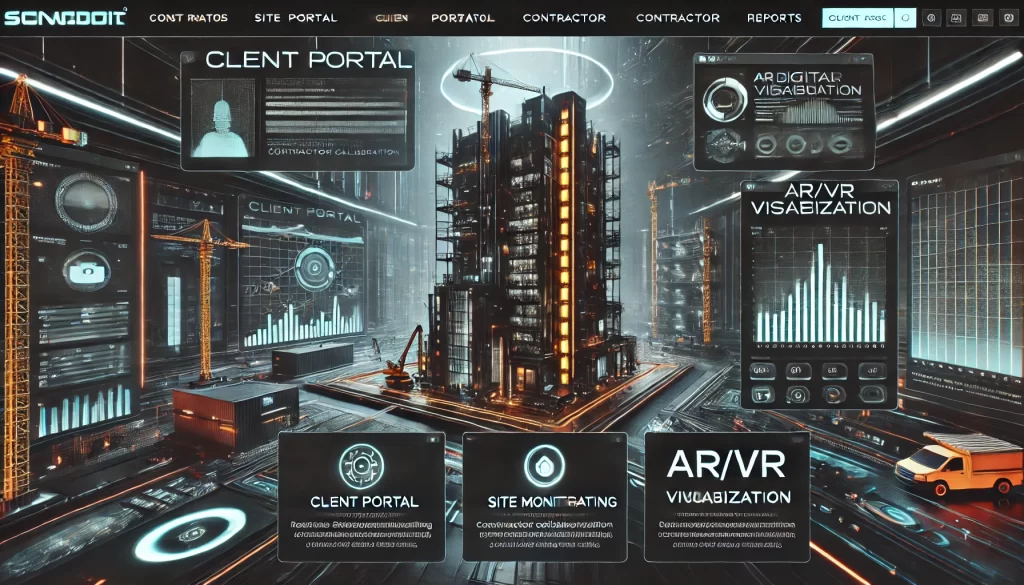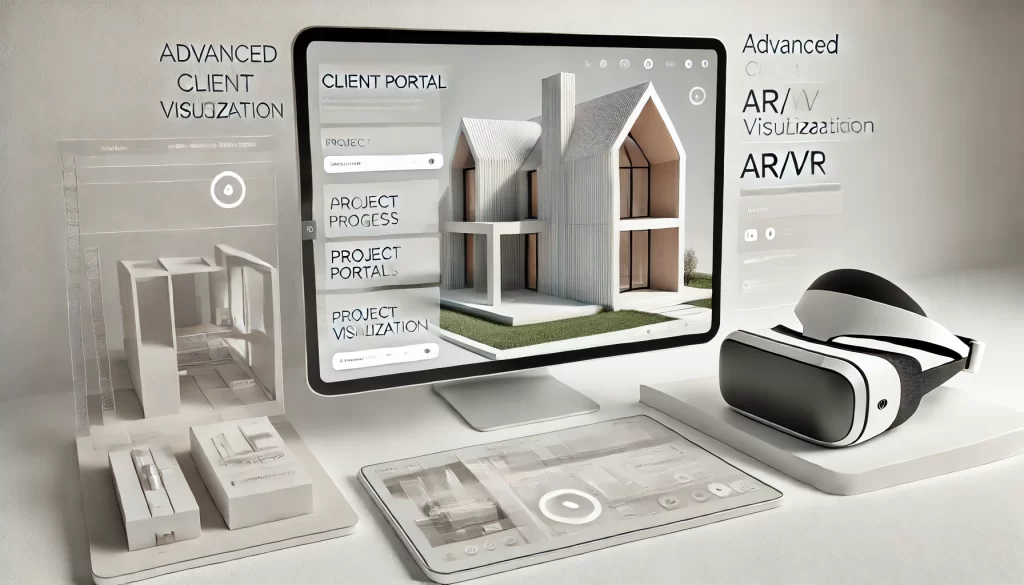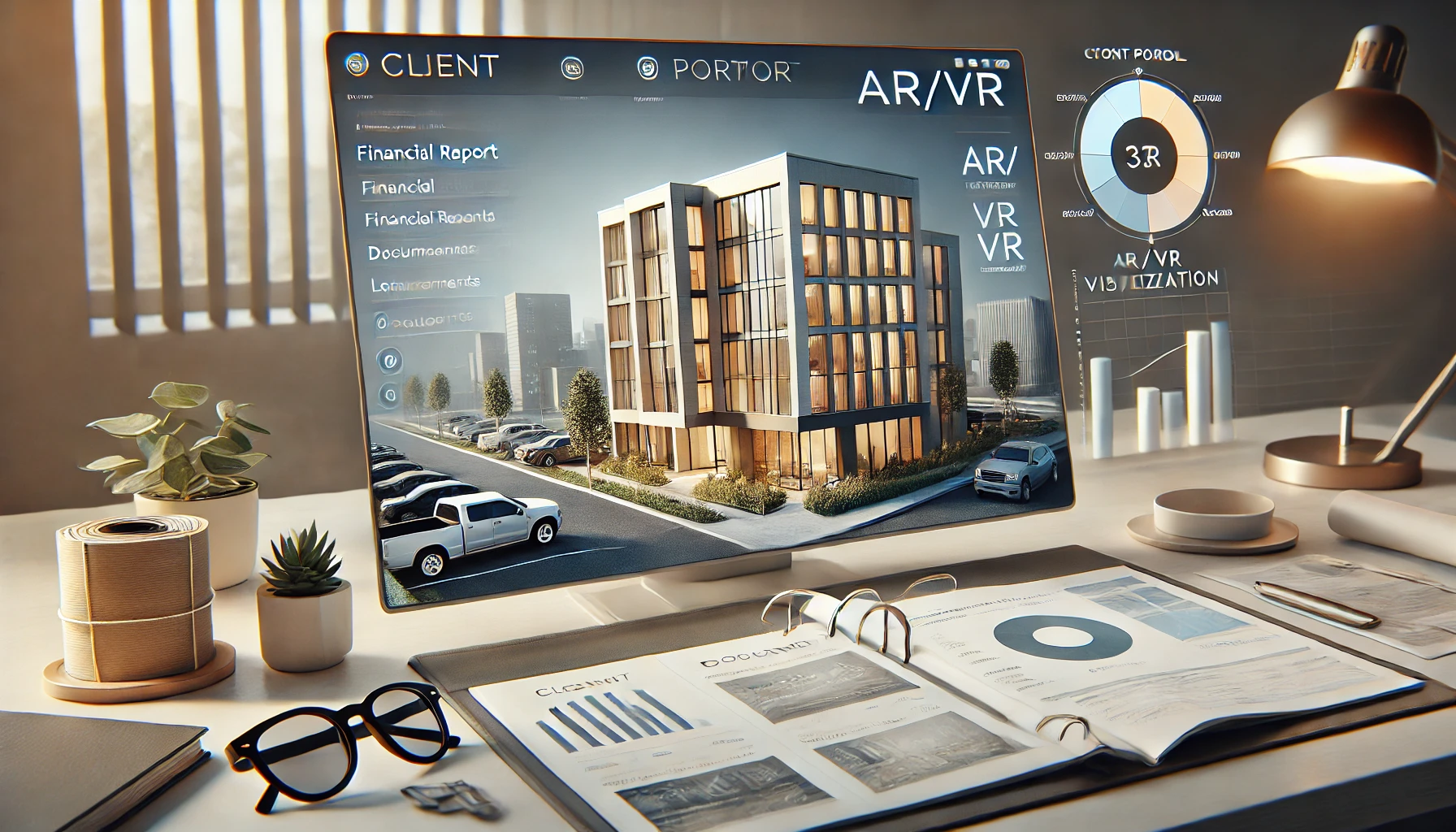Introduction
Construction websites have evolved to include advanced features that enhance user experience and improve functionality. These features, such as client portals, AR/VR for project visualization, and online inquiry forms, allow construction companies to streamline operations, improve client engagement, and stand out from competitors. This article explores these features in detail and offers insights into their benefits.

Integrating Client Portals for Project Tracking
Client portals are secure, personalized spaces that provide clients with access to project-related information.
Related Posts
- Specialized Construction Website Content
- Conclusion: Importance of Construction Website
- Marketing Construction Websites
Benefits of Client Portals
- Transparency: Clients can track project timelines, budgets, and milestones.
- Improved Communication: Portals offer a centralized platform for sharing updates, documents, and photos.
- Time Efficiency: Clients access information directly without needing constant updates from the construction team.
Key Features of Client Portals
- Progress Updates: Real-time updates on project status.
- Document Sharing: Upload contracts, plans, and permits for easy reference.
- Secure Messaging: Enable direct communication between clients and contractors.
- Payment Tracking: Provide a section for invoices and payment history.
Implementation Tips
- Use software like Procore or Buildertrend to integrate client portal features.
- Ensure mobile compatibility for on-the-go access.
- Keep the interface intuitive and user-friendly.

Using AR/VR for Project Visualization
Augmented reality (AR) and virtual reality (VR) are transforming home construction websites by providing immersive experiences for clients.
How AR/VR Enhances Construction Websites
- Project Visualization: Clients can “walk through” a project before it’s built, exploring layouts and designs in a 3D environment.
- Design Customization: AR/VR allows clients to experiment with different finishes, colors, or layouts in real-time.
- Improved Decision-Making: Clients gain a clear understanding of the final result, reducing misunderstandings or revisions.
Applications for Construction Contractor Websites
- Residential Projects: Showcase home layouts and interiors to potential buyers.
- Commercial Projects: Present large-scale projects like office spaces or retail designs to stakeholders.
- Renovations: Offer before-and-after simulations to highlight transformations.
Tools for AR/VR Integration
- Unity 3D: Develop immersive VR experiences.
- Augment: A platform for integrating AR into web content.
- Matterport: Create 3D virtual tours with ease.
Best Practices for AR/VR Implementation
- Optimize for both desktop and mobile users.
- Include clear instructions for navigating virtual environments.
- Combine AR/VR features with high-quality visuals for maximum impact.
Online Forms for Quotes and Inquiries
Online forms are essential for gathering client inquiries and providing quotes efficiently.
Benefits of Online Forms
- Convenience: Clients can submit requests anytime.
- Data Collection: Forms capture contact details, project requirements, and timelines.
- Faster Response Times: Automated responses acknowledge submissions, improving customer satisfaction.
Key Features of Effective Online Forms
- Custom Fields: Include options for project type, budget, and location.
- File Upload: Allow clients to share plans or images for reference.
- Captcha Verification: Prevent spam submissions.
- Responsive Design: Ensure forms work seamlessly on all devices.
Best Practices for Creating Online Forms
- Use platforms like Google Forms, JotForm, or WPForms for easy integration.
- Keep forms concise, asking for only essential details.
- Test forms regularly to ensure functionality.
Placement on the Website
- Contact Page: Include a form for general inquiries.
- Services Pages: Offer tailored forms for specific services, such as home construction or renovations.
- Landing Pages: Use forms to capture leads from PPC campaigns or email marketing efforts.
Related Posts
- Building and Customizing Construction Websites
- Design Best Practices for Construction Websites
- SEO Case Studies and Examples
FAQs
What is the role of client portals on construction websites?
Client portals provide a secure platform for tracking project progress, sharing updates, and improving communication between clients and contractors.
How does AR/VR benefit construction contractor websites?
AR/VR enhances project visualization, allowing clients to explore designs in 3D, customize features, and make informed decisions before construction begins.
Why are online forms important for construction websites?
Online forms streamline inquiries and quote requests, improving efficiency and client satisfaction by enabling quick and convenient communication.
What tools can I use to add AR/VR to my construction site web?
Platforms like Unity 3D, Augment, and Matterport help integrate AR/VR features into construction websites for immersive client experiences.
How can I optimize online forms for better usability?
Keep forms simple, use responsive designs, and include features like file upload and captcha verification to improve user experience and data collection.
What are the benefits of advanced features for home construction websites?
Advanced features like client portals, AR/VR, and online forms enhance transparency, engagement, and convenience, attracting more clients and improving project management.
Key Takeaways
Advanced features like client portals, AR/VR visualization, and online inquiry forms are transforming construction websites. These tools improve transparency, enhance client engagement, and streamline processes, making construction contractor websites more effective and competitive. By integrating these features, companies can offer a superior online experience that aligns with modern client expectations.
- Client portals enhance transparency and communication by providing project updates and secure messaging.
- AR/VR technologies allow clients to visualize projects in 3D, making designs more tangible and customizable.
- Online forms simplify quote requests and inquiries, improving convenience and response times.
- Using advanced features on construction websites builds trust, engages clients, and sets companies apart from competitors.
